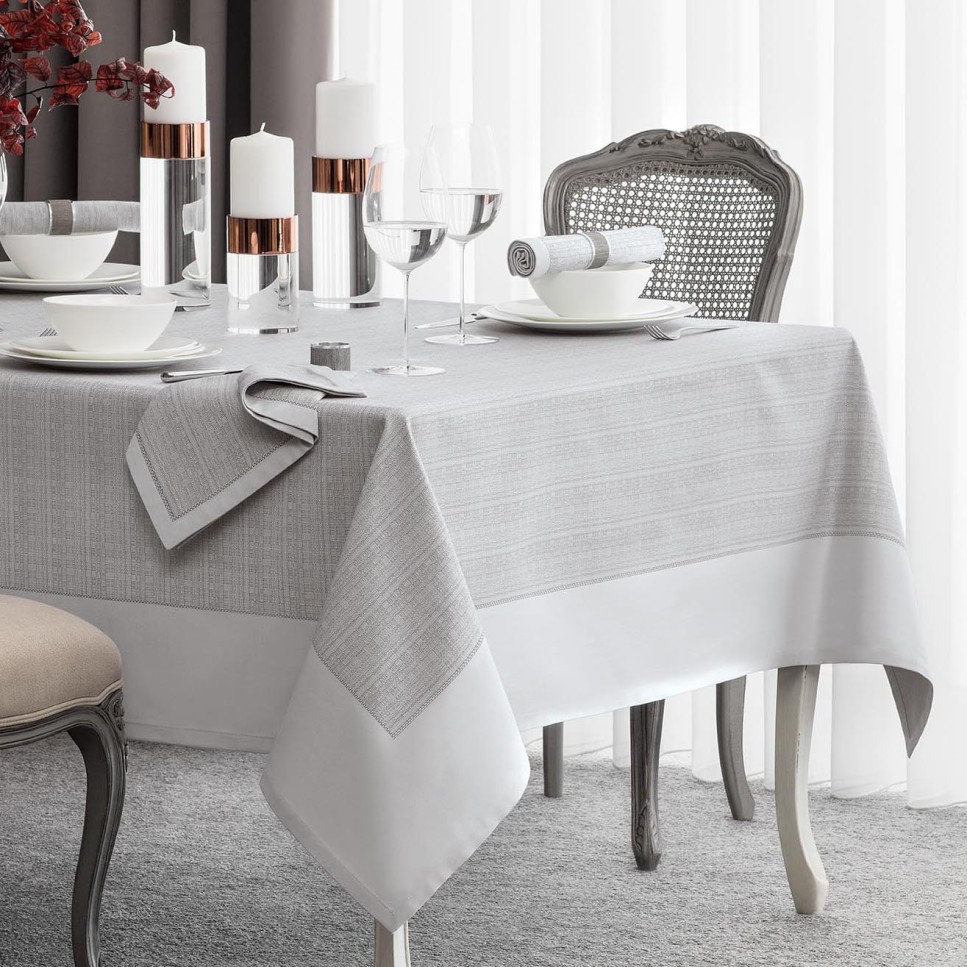Sophisticated Table Cloths: Perfect Choices for every single Celebration
Sophisticated Table Cloths: Perfect Choices for every single Celebration
Blog Article
Bed Linen Material Technologies: Exploring Modern Trends and Creative Applications in Design and Textile Sector
From lasting manufacturing methods to cutting-edge weaving innovations, the development of bed linen is improving the landscape of the fabric sector. As we dive right into the worlds of innovative layout applications and the introduction of bed linen blends and hybrid textiles, a new phase unravels in which linen's duty in future textile developments takes facility stage.
Sustainable Practices in Bed Linen Manufacturing
Sustainable techniques in bed linen manufacturing have actually become significantly essential in the textile industry's efforts to minimize environmental influence and advertise moral sourcing techniques. Bed linen, an all-natural fiber obtained from the flax plant, uses a range of benefits such as biodegradability, breathability, and longevity. Nonetheless, typical approaches of bed linen manufacturing can involve substantial water usage, chemical use, and energy-intensive procedures.
To address these challenges, numerous fabric manufacturers are embracing lasting techniques throughout the bed linen production process. This includes sourcing flax from natural ranches that avoid hazardous pesticides and chemicals, implementing water-efficient retting strategies to essence fibers from the flax stalks, and utilizing environmentally friendly dyes and coatings. In addition, some companies are buying renewable resource resources to power their manufacturing centers and lowering waste via recycling and upcycling initiatives.
Technological Innovations in Linen Weaving
With the expanding focus on lasting methods in linen manufacturing, the textile sector is now witnessing a surge in technological improvements specifically targeted at changing the art of linen weaving. These developments are reshaping the means linen fabrics are produced, using enhanced performance, quality, and creativity in weaving techniques.
One of the essential technical developments in linen weaving is the integration of computerized looms. These advanced looms are furnished with software that enables for detailed and intricate designs to be woven with precision. By digitizing the weaving process, manufacturers can accomplish better consistency and precision in their linen materials.
Moreover, advancements in yarn spinning modern technology have actually made it possible for the manufacturing of finer and more long lasting bed linen yarns - table cloths. This leads to softer and smoother linen textiles that keep their quality also after several uses and cleans
Additionally, the development of environmentally friendly dyeing procedures and surfaces for bed linen textiles is obtaining traction. These sustainable methods not only lower the environmental influence but additionally satisfy the increasing consumer demand for morally generated fabrics.
Creative Layout Applications for Linen
Ingenious imaginative strategies are significantly shaping the innovative style applications for bed linen in the textile sector. Linen's all-natural aesthetic charm and capacity to blend with various other textiles make it a favored option for developing unique garments and devices that cater to the eco aware consumer.
Additionally, developers are try out linen in home decoration, utilizing its breathable and long lasting nature to craft fashionable home furnishings such as curtains, bed linens, and upholstery. The structure and drape of bed linen bring a feeling of refinement and convenience to indoor rooms, including a touch of sophistication to contemporary homes.

Linen Blends and Crossbreed Fabrics

Crossbreed fabrics, on the other hand, take the concept of blending an action even more by including additional elements such as metallic threads, recycled materials, or conductive fibers. These cutting-edge fabrics not just expand the design opportunities yet additionally present functional aspects like conductivity, antimicrobial homes, or improved sturdiness. Hybrid fabrics are increasingly being utilized in various sectors, consisting of style, interior style, and technical textiles, where the demand for multifunctional materials gets on the surge.
Bed linen's Duty in Future Fabric Innovations

In the world of future fabric technologies, bed linen is anticipated to be a principal in the development of advanced practical materials. Researchers and designers are checking out methods to improve linen's intrinsic high qualities with technical improvements, such as integrating wise fabrics, nanotechnology, and efficiency coatings. These technologies intend click to investigate to boost bed linen's performance attributes, making it suitable for a more comprehensive variety of applications, from activewear to safety clothes.
Additionally, the combination of linen with other natural or synthetic fibers opens countless opportunities for producing novel textiles with one-of-a-kind properties and capabilities. By leveraging bed linen's qualities and checking out innovative blends, the fabric market is poised to introduce amazing advancements that satisfy evolving customer requirements and sustainability demands.
Conclusion
In verdict, the expedition of sustainable techniques, technical developments, creative layout applications, linen blends, and its role in future fabric developments highlight the continuous advancement of linen textile in the contemporary design and fabric market. With an emphasis on advancement and creativity, the convenience and green nature of bed linen make it an important product for producers and designers alike, leading the way for more growths and innovations in the field of fabrics.
As we dive right into the worlds of imaginative design applications and the emergence of bed linen blends and crossbreed materials, a brand-new chapter unravels in which linen's duty in future fabric developments takes center phase.
Discovering the fusion of linen with check various other fabrics has led to the development of ingenious blends and crossbreed fabrics in the contemporary fabric sector. Linen blends use a distinct combination of the attributes of linen with those of various other fibers, resulting in fabrics that possess enhanced properties such as enhanced toughness, enhanced draping, and lowered wrinkling.The development of linen blends and crossbreed click this link materials has actually established the stage for Bed linen to play a critical duty in driving future textile technologies.In the realm of future fabric technologies, bed linen is anticipated to be a crucial player in the growth of sophisticated useful textiles.
Report this page